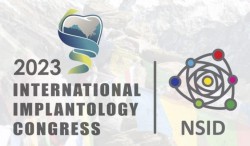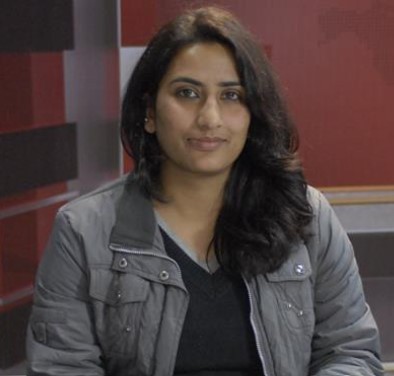Life & Health
-min1655967913.jpg)
-min1656589917.jpg)
People with cancer, kidney failure and spinal injury will get a government handout of Rs. 5,000 a month each for their treatment, according to the new fiscal budget.
The budget has set aside Rs 1.5 billion to resume the scheme, which was discontinued by the former government, led by KP Oli.
The scheme was introduced in January 2018 by the government under Sher Bahadur Deuba’s fourth stint as prime minister.
This year’s overall budgetary allocation for health is Rs 69.38 billion, which is lower than the annual sum the health ministry had received for over two years.
In the year 2021-2022, the Ministry of Health and Population received an allocation of Rs 122.77 billion. The figure was Rs 90.69 billion for the year 2020-2021.
“The monthly allowance is a good decision. It is not a huge amount, but it will help us,” said Balaram Subedi, Chair of Shree Mrigaula Pidit Sarokar Samaj.
Patients need money for contraptions, such as AV fistula for long-term dialysis, tests and medicines. Their concern now is getting the money in time.
“The process to get the allowance should be easy. We need the money in time,” Subedi said.
Kidney patients complain that their free dialysis involves spending a lot of money in medication and other charges at the health centres.
“It would have been better to strengthen the dialysis and transplant services rather than distributing the monthly allowance to the patients,” said Dr Samir Lama, Consultant and General Practitioner at Bodhichitta Health Care. “It is like you are giving money from one hand and taking it back with both hands.”
The government has also announced free treatment to patients of haemophilia, an inherited disorder that affects the blood's ability to clot. But related services are rarely found in the country, which lacks a proper health service delivery framework.
“Hospitals delivering haematology services are very limited in Nepal,” said Dr Ajay Kumar Jha, Consultant Haematologist at Kantipur Hospital. “Until and unless diagnosis, treatment and follow-up are available, there is no use of free treatment.”
Haemophilia patients from rural areas have to travel to Kathmandu for diagnosis and care.
“The announcement of free treatment for haemophilia patients shows the government’s focus on specific diseases. A greater attention instead is needed to look into the sources of delivering the free services,” said Dr Kiran Regmi, former Health Secretary at the Ministry of Health and Population.
“The government has to have a catalogue of haematologists and patients for a dedicated work plan, with commitment to delivering the service, such as in coordination with haematologists at the provincial hospitals, for treatment. Without this, the announcement is just a populist move to woo votes in the upcoming election,” Dr Jha added.
Refrains about the lack of hospitals, services, human resources and infrastructure have been common in Nepal’s health sector. As a response, the budgetary allocations aim at completing the hospitals under construction in 655 local levels and rebuilding or maintaining other hospitals.
As part of the infrastructure work, the government is building trauma centres in Sainamaina of Rupandehi, Devchuli of Nawalaprasi East, Lamki of Kailali, Rakam of Kailali corridor, and Belkhu of Dhading.
To improve the quality of health services, the budget is implementing the one-doctor-one-hospital programme.
Despite its priority on upgrading the health care system, the budget has made no specific allocation to human resource management even as health practitioners are migrating to foreign countries for better opportunities.
A robust mechanism is necessary for the country to deliver quality health services, run by well-managed human resources, according to experts.
“How can quality health care be possible if there is no necessary human resource?” questioned Dr Lama. “The government must recruit medical human resources. Health care providers on a contract basis can’t ensure quality services.”
Rather than giving money or free health services to special type of patients, health experts believe, the government must focus on a long-term delivery of health services across the country.
“This budget is more like a populist budget, more like a party’s election manifesto,” said Dr Jha.
For specialised treatment of elderly citizens, the budget plans to add geriatric wards in 20 hospitals in the centre and provinces this year.
Geriatrics, or geriatric medicine, focuses on the health care of elderly people.
The government has established geriatric wards in 49 health centres in the central and provincial level across the country. Again, a lack of human resource to deliver the services for the seniors shows up as a challenge -- only four geriatricians are working across the country.
“If the government wants to add geriatric wards in the health centres then it must think about the human resources needed there,” said Dr Ramesh Kandel, Medical Director and Clinical Geriatrician at Rapti Academy of Health Sciences. “We are just too few for now.”
According to National Census 2011 there are 21,54,410 people between the ages of 60 and 90+ years in Nepal.
“If the government wants to establish geriatric wards and deliver special health care for the elderly population then it must recruit geriatricians and trained nurses,” said Dr Kandel. As an immediate response, the government has started training medical officers to help in the treatment of elderly population.
The amount allocated for the health sector is less than 10 per cent of the fiscal budget this year. The share of the budget for health is less than the share in the sector over the last two fiscal years when the country was under the grip of the coronavirus pandemic.
“As the coronavirus cases have decreased, the health budget might have been slashed. A budget of over 10 per cent share in the health sector is considered to be good. If we had more budget we would have been able to introduce new programmes and policies in the health sector,” said Dr Regmi.
The government plans to work with the private sector for health insurance, but the decision has generated some concerns.
“Insurance is the backbone for poor people. The government must work on how to decrease the out-of-pocket expenses through its health insurance policy but here it is opting for privatisation. This doesn’t give a good message to the public,” she said.
One key aim of the budget is to decrease the maternal mortality rate in the country through nutritional programmes for the pregnant women, their health check-ups and safe delivery services.
By standard definitions, maternal deaths occur during pregnancy or childbirth, or within 42 days after the birth or termination of a pregnancy, but are not due to accidents or violence. According to Nepal Demographic Health Survey the maternal mortality ratio for the period 2009-2016 is 239 deaths per 100,000 live births. About 12 per cent deaths of women aged 15-49 are maternal deaths.
“If the government can use its budget as planned and work properly then it will help save the lives,” added Regmi.
Vaccination against cervical cancer has also received a mention in the budgetary allocations.

_11zon1681280198.jpg)




